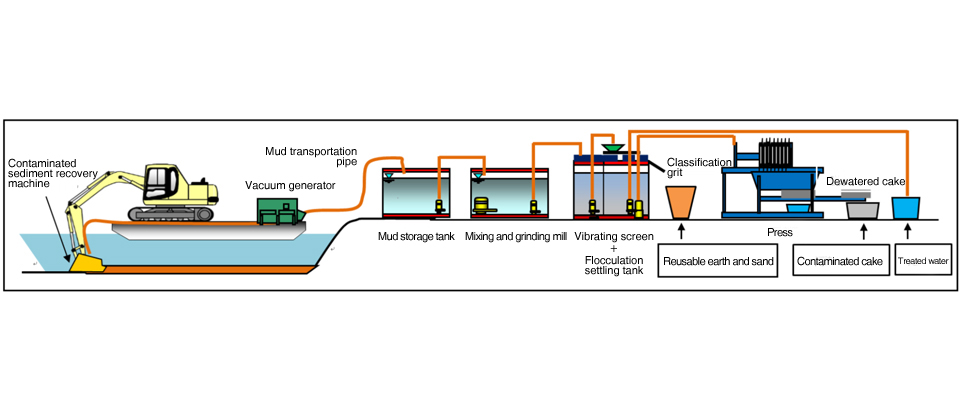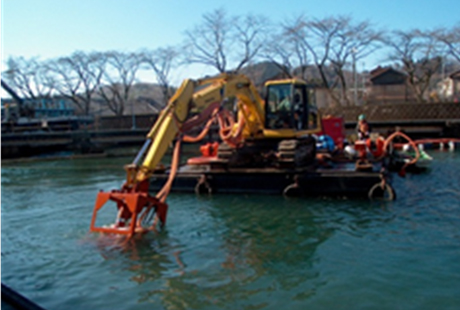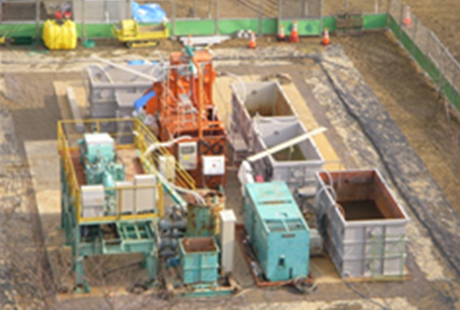Bottom Sediment Decontamination System for Lakes, Marshes, Rivers, and Other Waters
Radioactive substances (radioactive cesium) that flow into lakes, marshes, ports, and other bodies of water are strongly adsorbed by the silty clay that makes up the bottom sediments, and are accumulated widely in the surface layer. Particularly in closed bodies of water, highly concentrated radioactive substances are adsorbed on the floating mud that drifts in the surface layer. For this reason, when performing decontamination, it is important to recover only the contaminated surface layer without spreading this floating mud.
Using a unique mechanism, the Toyo Decontamination System enables efficient decontamination by recovering the minimum necessary layer thickness of sediments, without spreading floating mud, and classifying the adsorbed particles of radioactive substances at the purification plant.

Composition diagram of total decontamination system

Example of soil recovery machine for use in water area

Purification plant
Features
- By using a unique Toyo in-situ sampling method and performing an advance investigation of radioactive isotopes, it is possible to understand the condition of floating mud and the distribution of contamination, and to set the minimum necessary layer thickness for recovery. Control of this makes it possible to minimize the amount of recovered sediments.
- Because work is performed under a condition of water storage, work can be performed without raising the air dose of radiation. By using a combination of a diffusion prevention sheet + rotating paddle + screw conveyor + vacuum pump, floating mud and bottom sediments are recovered while minimizing the spread of radioactive substances.
- The purification plant, which is coupled with the recovery system, classifies the recovered sediments into reusable soil and residue requiring final disposal. A unique Toyo stirring and washing device demonstrates a high decontamination effect.
- The operation management system can measure the barge position, depth, soil thickness, and mud transportation condition in real time, and thereby recover only the reset layer thickness. Minimizing the amount of recovered sediments also reduces the volume requiring final disposal.
- Both the barge and the system can be separated, enabling land transportation.